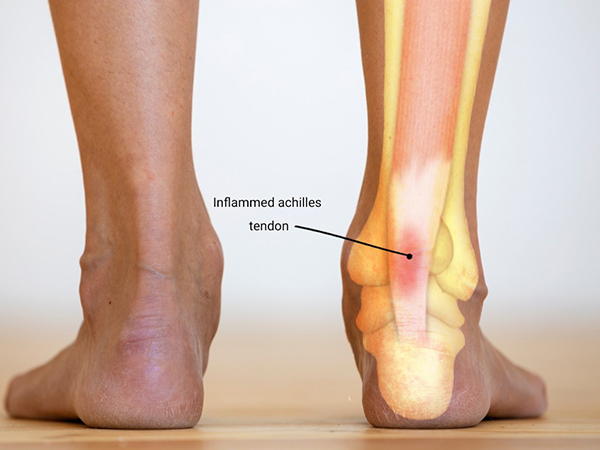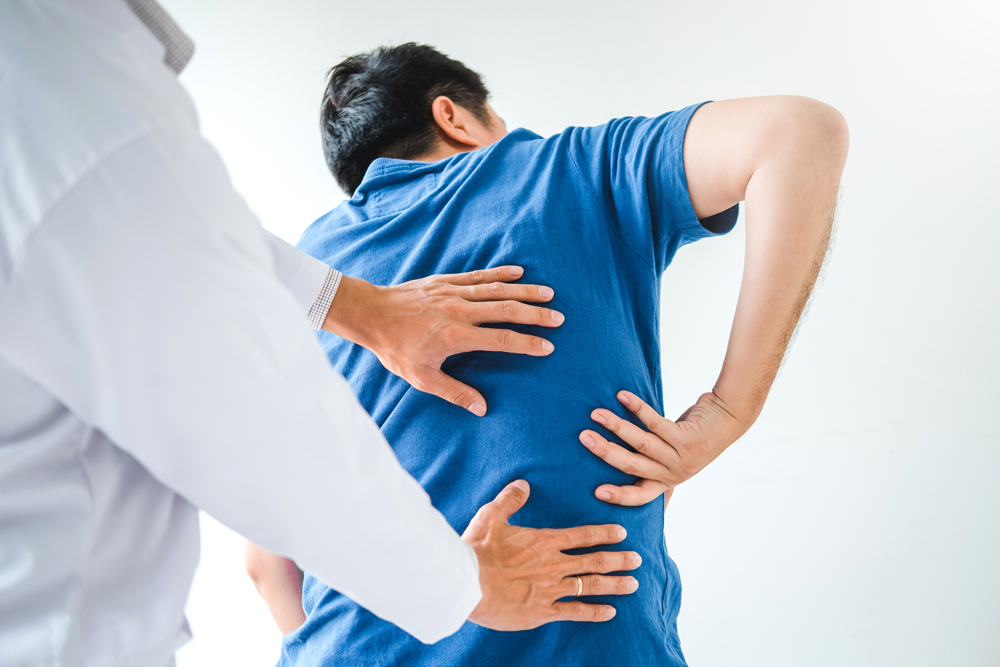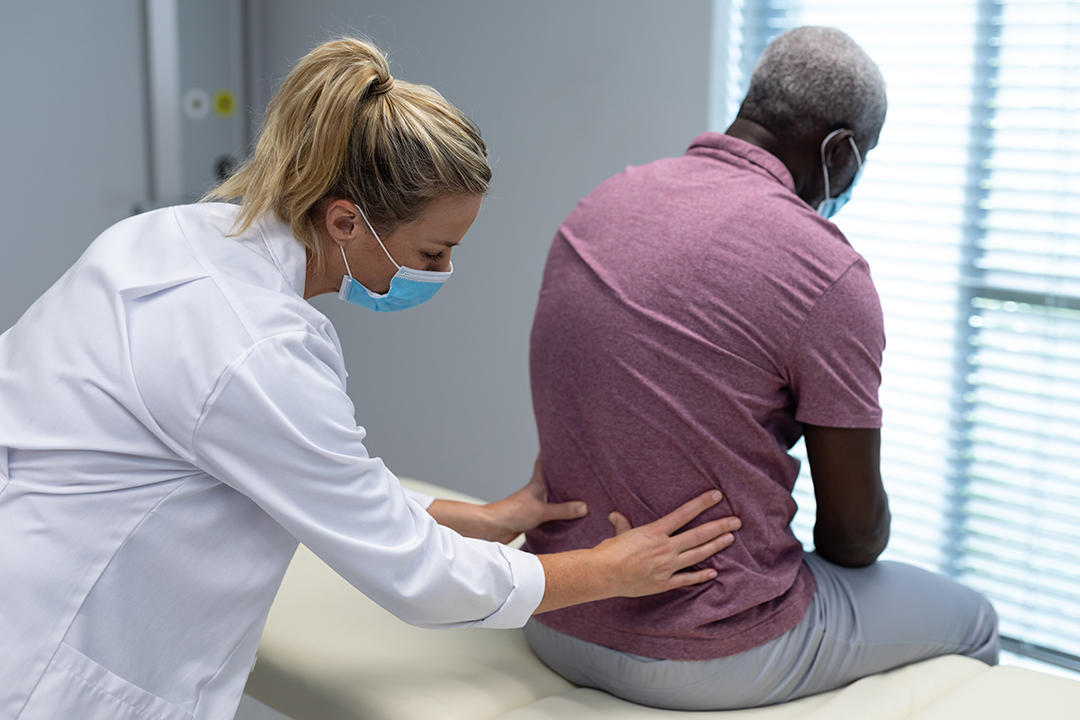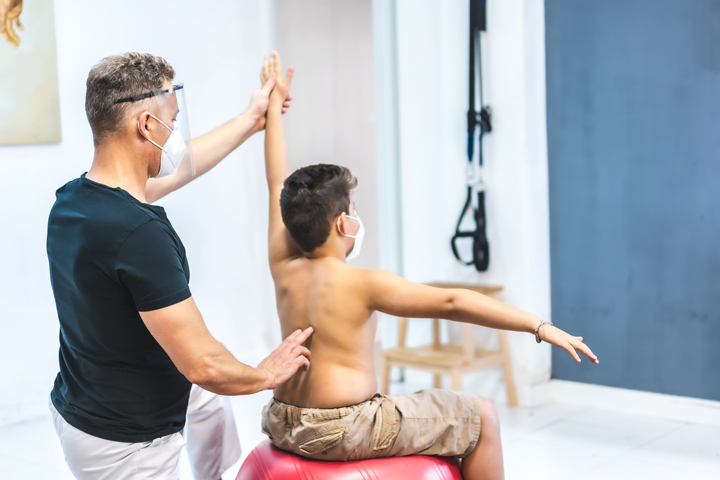Achilles Tendonitis
Tendons are strong, fibrous bands that connect muscles to bones, allowing movement. The Achilles tendon, the body’s most powerful tendon, helps bend the knee and point the foot downward, which is crucial for activities like running, climbing, and jumping. When this tendon is subjected to repetitive strain, it can become inflamed and irritated, leading to a condition known as Achilles tendonitis.

Achilles Tendonitis
Symptoms and causes to Achilles Tendonitis
Symptoms of Achilles Tendonitis
A dull ache or sharp pain along the back of the tendon and heel.
Stiffness or difficulty moving your ankle.
The area around the pain may feel warm or look red.
Mild to severe pain the day after physical activity.
Swelling around the injured spot.
Causes of Achilles Tendonitis
One leg being longer than the other
Overworking the tendon
Rapidly increasing the intensity of your activities
Suddenly switching to a different type of training surface (like going from soft to hard)
Wearing improper shoes
How to Manage Achilles Tendonitis
R.I.C.E (Rest, Ice, Compression, Elevation):
For a new or minor injury, start with rest by reducing your daily activities. Apply an ice pack to the injured area for 15 minutes several times a day to ease the pain. Use an elastic wrap or bandage for compression, and elevate the affected leg to help reduce swelling.
Stretching Exercises:
Once the acute pain and inflammation have lessened, perform daily calf muscle stretches, focusing on eccentric stretching, to aid recovery.
Immobilization:
If the injury is severe, using a walking boot or an ankle-foot orthotic can help immobilize the area while still allowing for minimal movement, helping to reduce pressure and promote healing.
Advanced Therapies:
Consider treatments like Extracorporeal Magnetotransduction Therapy (EMTT) or Shockwave Therapy (ESWT) to speed up healing, reduce pain, ease muscle tension, and stimulate new blood vessel growth.
Custom Foot Orthotics:
How Do I Prevent Achilles Tendonitis?
Wear the Right Shoes:
Pick footwear that suits the activity you’re doing to provide proper support and reduce strain on your feet.
Stretch Regularly:
Incorporate regular stretching into your routine to keep your muscles flexible and maintain a good range of motion.
Warm Up and Cool Down:
Always do warm-up and cool-down exercises before and after sports or workouts to prepare your body and help it recover.
Adjust Intense Workouts:
If you find that your condition keeps coming back or is getting worse, it’s important to act carefully to avoid serious issues like tendon tears. Using conservative treatments, like physical therapy, can speed up recovery, improve your sports performance, and help reduce pain.
Frequently Asked Questions
What’s the Quickest Way to Heal Achilles Tendonitis?
Non-invasive treatments like shockwave therapy can speed up recovery from Achilles tendonitis. While home remedies like R.I.C.E (Rest, Ice, Compression, Elevation) can help with pain relief, they don’t address the root of the problem.
Is Walking Good for Achilles Tendonitis?
Walking might make your Achilles tendonitis worse. Instead, focus on stretching or exercises that don’t put too much pressure on your feet.
Can Footwear Choices Affect Achilles Tendonitis?
Yes, wearing the wrong or poorly fitting shoes can lead to Achilles tendonitis by not giving your tendons enough support or affecting how they work. If you’re having pain, it’s a good idea to talk to a podiatrist about the best footwear for you.
Does Achilles Tendonitis Cause Shoes to Wear Out Faster?
Achilles tendonitis often leads to a noticeable lump at the back of the heel. This lump can rub against the back of your shoes, causing them to wear out more quickly. When shoes get worn out, they no longer provide the support you need, so they should be replaced.
What Happens If Achilles Tendonitis Is Ignored?
If you don’t address Achilles tendonitis, it’s likely to get worse and may become a long-term problem. In severe cases, the tendon might tear, which could require surgery. Early treatment can help prevent this and improve your chances of a full recovery, so it’s important to consult a podiatrist.
Can You 'Run Through' The Pain?
It’s not a good idea to ignore pain in your Achilles tendon and try to keep running. While you might only feel pain at the beginning of your run and hope it will go away, continuing to run can make the injury worse and turn it into a chronic issue. To avoid this, seek help from a podiatrist as soon as you can.
Book your initial podiatry visit
hello@nofrillspodiatry.com
Phone
9007 1085
Open Hours
Mondays - Sundays: 9am-6pm
We're Here Whenever You Need Us
hello@nofrillspodiatry.com
Contact Us
9007 1085
Open Hours
Monday-Sundays: 10am to 7pm
Address
About
About Us
Symptoms We Help With
FAQs
Careers
Contact Us
STOP LOWER BACK PAIN
How do I alleviate my lower back pain?
Rest
In some cases, the simplest solution can be the most effective.
If you’ve recently strained your back or are experiencing acute pain, allowing your body adequate time to rest and heal is crucial.
However, it’s important to strike a balance, as excessive inactivity may weaken your muscles and lead to prolonged pain.
Heat & cold therapy
Quick relief for lower back pain can be found by applying heat or cold.
Cold packs aid in reducing inflammation and numbing the area, while heat packs or warm baths relax tight muscles.
Experimenting with both methods can help identify what works best for your specific situation
Stretch & Strengthening
Stretching and strengthening exercises (e.g. bridge exercise, hamstring, side planks) can indeed help alleviate lower back pain by improving flexibility, stability, and muscle support.
Remember to listen to your body and avoid overstretching or pushing through pain.
Do consult a healthcare professional before any new exercise routines.
Massage
A soothing massage can bring relief by releasing tension in muscles and enhancing blood flow to the affected area.
Whether it’s a professional massage or a gentle self-massage with a foam roller, hands-on techniques can effectively address back pain.
Ergonomic changes
If prolonged sitting is linked to your lower back pain, consider making ergonomic adjustments to your workspace. Modify your chair, desk, and computer setup to ensure proper posture and back support.
Take regular breaks to stand, stretch, and walk around.
Chiropractic care
Chiropractic care encompasses spinal and joint manipulation to alleviate pain and enhance overall health.
Numerous individuals experiencing lower back pain have reported substantial relief through chiropractic adjustments.
Acupuncture
Acupuncture, an alternative therapy involving the insertion of fine needles into specific body points, is known to alleviate pain and facilitate healing.
Many individuals find relief from lower back pain through acupuncture sessions.
Posture correction
Poor posture often plays a role in lower back pain. Mindful awareness of your posture while sitting, standing, or walking is essential.
Cultivate good posture by keeping your spine in a neutral, natural position, and use supportive chairs and cushions as needed.
Rest
In some cases, the simplest solution can be the most effective. If you’ve recently strained your back or are experiencing acute pain, allowing your body adequate time to rest and heal is crucial. However, it’s important to strike a balance, as excessive inactivity may weaken your muscles and lead to prolonged pain.
Heat and cold therapy
Quick relief for lower back pain can be found by applying heat or cold. Cold packs aid in reducing inflammation and numbing the area, while heat packs or warm baths relax tight muscles. Experimenting with both methods can help identify what works best for your specific situation
Stretching and strengthening
Stretching and strengthening exercises (e.g. bridge exercise, hamstring, side planks) can indeed help alleviate lower back pain by improving flexibility, stability, and muscle support.
Remember to listen to your body and avoid overstretching or pushing through pain.
Do consult a healthcare professional before any new exercise routines.
Ergonomic changes
If prolonged sitting is linked to your lower back pain, consider making ergonomic adjustments to your workspace. Modify your chair, desk, and computer setup to ensure proper posture and back support. Take regular breaks to stand, stretch, and walk around.
Posture correction
Poor posture often plays a role in lower back pain. Mindful awareness of your posture while sitting, standing, or walking is essential. Cultivate good posture by keeping your spine in a neutral, natural position, and use supportive chairs and cushions as needed.
Massage
A soothing massage can bring relief by releasing tension in muscles and enhancing blood flow to the affected area. Whether it’s a professional massage or a gentle self-massage with a foam roller, hands-on techniques can effectively address back pain.
Acupuncture
Acupuncture, an alternative therapy involving the insertion of fine needles into specific body points, is known to alleviate pain and facilitate healing. Many individuals find relief from lower back pain through acupuncture sessions.
Chiropractic care
Chiropractic care encompasses spinal and joint manipulation to alleviate pain and enhance overall health. Numerous individuals experiencing lower back pain have reported substantial relief through chiropractic adjustments.
UNDERSTANDING LOWER BACK PAIN
What are the common indicators of lower back pain?
Lower back pain is characterized by discomfort or pain in the region beneath the ribcage and above the hips, known as the lumbar spine. Comprising five vertebrae (L1 to L5), this area bears much of the body’s weight and facilitates various movements.
Lower back pain may present as a mild, enduring ache or an intense, sharp discomfort, classified as either acute (lasting a few days to weeks) or chronic (extending beyond three months).
Typical symptoms include:

LOWER BACK PAIN FROM BENDING OVER
What causes lower back pain during bending over?
Lower back pain triggered by bending over can be influenced by various factors.
Here are several key considerations:

Muscle Spasms
Dehydration, insufficient blood flow, nerve compression, and muscle overuse can induce muscle spasms, contributing to lower back discomfort when bending over or lifting objects.
Muscle Strain
Sudden or forceful bending movements, especially without proper preparation, can strain the muscles in the lower back, resulting in pain and discomfort.
Spondylolisthesis
Degenerative conditions
Bending over may worsen symptoms of degenerative conditions like osteoarthritis or spinal stenosis, contributing to lower back pain.
Poor posture
Arthritis
Herniated discs
Bending over places pressure on inter-vertebral discs, and if one of these discs herniates or ruptures, it may compress nearby nerves, causing sharp, shooting pain in the lower back.
CHIROPRACTIC APPROACHES TO LOWER BACK PAIN
Should I see a chiropractor for lower back pain?
Chiropractic care stands as a viable choice for those seeking non-medication approaches to address lower back pain. Chiropractors, specialized healthcare professionals, excel in diagnosing and treating musculoskeletal conditions, including issues related to the lower back. Through hands-on techniques, they perform adjustments on the spine and other joints, aiming to relieve pain and enhance overall spinal health.
If you’re grappling with chronic or recurring lower back pain, seeking the expertise of a chiropractor can prove beneficial. Chiropractic care is known to address various lower back issues, encompassing muscle strains, herniated discs, and misaligned vertebrae. The focus of chiropractors lies in identifying the root cause of your pain and delivering precise adjustments to tackle it.
How many chiropractic sessions are necessary in order to resolve lower back pain?
The number of chiropractic sessions required to address lower back pain can vary, influenced by factors like the severity and underlying cause of your pain. Generally, chiropractic treatment plans involve an initial phase of more frequent sessions, succeeded by a maintenance phase.
The breakdown is as follows:
Initial phase
In the initial stage of chiropractic care, you may need to attend 2-3 sessions per week for several weeks. The primary objective is to alleviate pain, restore proper spinal alignment, and enhance overall function. The frequency and duration of sessions depend on your specific condition and your body’s response to treatment.
Recovery phase
As your pain and symptoms show improvement, the frequency of chiropractic visits typically decreases. During this recovery phase, you may visit once a week or once every two weeks.
Maintenance phase
Once your lower back pain is effectively managed, your chiropractor might recommend occasional visits for maintenance. These visits play a preventive role, helping ward off potential future issues and maintaining the health of your spine. Depending on your individual needs, you might see your chiropractor once a month or less frequently.
It’s essential to recognize that chiropractic care often yields optimal results when combined with additional self-care strategies, such as regular exercise, stretching routines, and maintaining good posture.
For optimal results, chiropractic care should be combined with self-care strategies like regular exercise, stretching, and maintaining good posture. This holistic approach enhances the effectiveness of chiropractic treatments for better overall health.

CHIROPRACTIC SOLUTIONS
Chiropractic techniques for lower back pain relief
Chiropractors utilize various chiropractic adjustment techniques to effectively manage lower back pain and enhance spinal health. Discover some of the most common chiropractic techniques used for lower back pain relief:
Spinal Manupilation
The spinal manipulation technique is the most well-known chiropractic method. It involves the chiropractor using their hands to apply controlled force to specific spinal joints. This technique aims to restore proper alignment, reduce pain, and improve overall spinal function.
Activator Technique
The Activator Method employs a handheld instrument to deliver precise, gentle impulses for spinal adjustments. This technique is ideal for those who require or prefer a softer approach to chiropractic care.
Sacro-Occipital Technique (SOT):
SOT focuses on the connection between the sacrum (the triangular bone at the base of the spine) and the skull, utilizing gentle, low-force methods to restore spinal balance and alignment.
Flexion-Distraction Technique
This chiropractic technique involves using a specially designed table to gently traction the spine, making it highly effective for treating conditions such as disc herniations and spinal stenosis.
The Gonstead Technique
It’s important to have an initial consultation with a chiropractor to determine the most appropriate technique for your specific condition. Chiropractors tailor their approach to the individual, taking into account your medical history, current symptoms, and any existing conditions.
Important: The information provided above is not a substitute for professional medical advice, diagnosis, or treatment. Since symptoms and treatments can vary for each individual, it is essential to consult a chiropractor or medical professional for a precise diagnosis and personalized treatment plan.
SLEEPING POSTURE MATTERS
Best sleeping positions to relieve lower back pain
Quality sleep is essential for your body’s healing and repair processes. Finding the optimal sleeping position can significantly reduce stress on your lower back.
Explore these recommended sleeping positions to alleviate lower back pain:

Lie on back + Pillow under knees
Lie on your back with a pillow under your knees to maintain the natural curve of your spine and support your lower back. This position helps alleviate pressure on your lumbar region, providing effective lower back pain relief.
Fetal position + Pillow between knees
Curling up in the fetal position can provide comfort for many individuals. To avoid excessive twisting of the spine, place a pillow between your knees.
Side sleep + Bent knees
Sleeping on your side with slightly bent knees can be comfortable. Draw your knees towards your chest and keep your spine neutral. Using a supportive pillow will help maintain proper alignment.
Stomach Sleeping
EXERCISES FOR LOWER BACK PAIN
Which exercises and stretches can alleviate lower back pain?
Consistent exercise and stretching are crucial for managing and preventing lower back pain. Here are some beneficial exercises and stretches to consider:

Partial Crunches for Core Strength
Lie on your back with your knees bent and hands placed behind your head. Lift your shoulders off the floor by engaging your abdominal muscles, being careful not to strain your neck. This exercise strengthens your core muscles, which can provide better support for your lower back.
Knee-to-Chest Stretch for Lower Back Relief
Lie flat on your back with your legs extended. Slowly bring one knee up to your chest while keeping the other leg straight on the floor. Hold the stretch for 20–30 seconds to effectively stretch and loosen lower back muscles, then switch sides. This exercise helps alleviate lower back pain and improve flexibility.
Pelvic Tilts for Lower Back Flexibility
Lie on your back with your knees bent and feet flat on the floor. Slowly tilt your pelvis up and down to engage your core muscles. This exercise promotes lower back flexibility and helps reduce stiffness.
Child's Pose for Lower Back Relief
Sit back on your heels with your knees apart, then lean forward and extend your arms in front of you. This stretch lengthens the lower back and relieves tension, providing effective pain relief and relaxation.
Cat-Cow Stretch for Spine Flexibility
Begin on your hands and knees, arching your back upwards like a cat, then smoothly transition to arching it downwards like a cow. This dynamic stretch enhances spine flexibility and mobility, promoting overall back health.
Bridge Exercise
Lie on your back with your knees bent and feet flat on the floor. Raise your hips to form a straight line from your shoulders to your knees. This exercise helps strengthen your glutes and lower back muscles.
SEEKING PROFESSIONAL ASSISTANCE FOR NECK PAIN
Is it better to consult a chiropractor
or a doctor for neck pain?
Consulting a medical doctor
A medical doctor, often a general practitioner or orthopedic specialist, is the ideal choice if:
- You are experiencing severe neck pain stemming from a recent injury or trauma.
- Your neck pain is accompanied by symptoms like numbness, weakness, or tingling in your arms or hands.
- You have a history of neck or spinal surgeries.
- There is suspicion of an underlying medical condition, such as a herniated disc or arthritis.
- Your neck pain persists and does not respond to home remedies or conservative treatments.
Medical doctors can conduct diagnostic tests like X-rays, MRIs, or CT scans to pinpoint the cause of your neck pain. They can also prescribe medications or recommend surgical interventions if required.
Consulting a chiropractor
Chiropractors are healthcare professionals specializing in the musculoskeletal system, including the spine and neck. You might consider consulting a chiropractor if:
- Your neck pain is primarily related to musculoskeletal issues, such as muscle tension or misaligned vertebrae.
- You prefer drug-free, non-invasive treatments.
- You desire a holistic approach to address not only the symptoms but also the underlying causes of your neck pain.
Chiropractors employ manual manipulation techniques, like spinal adjustments, to realign the spine and alleviate musculoskeletal pain. They may also offer guidance on lifestyle changes, exercises, and stretches to enhance neck health.
It’s crucial to note that chiropractic care may not be suitable for everyone, especially in cases of severe injury or underlying medical conditions. A spinal check-up can help determine if chiropractic care aligns with your needs.
SHOULD I CONSULT A CHIROPRACTOR OR MASSAGE THERAPIST FOR A STIFF NECK?
Consulting a medical doctor
Evaluation: The chiropractor will assess your neck’s range of motion, posture, and alignment to identify any misalignments or subluxations. At NoFrills Chiropractic, we ensure a comprehensive evaluation during our spinal check-up.
SEEKING A MASSAGE THERAPIST
Massage therapists specialize in manipulating soft tissues and muscles to induce relaxation and alleviate tension. If you opt for a massage therapist to address your stiff neck, here’s what you can expect:
Massage techniques: The therapist will employ various massage techniques, such as Swedish massage or deep tissue massage, to target the muscles in your neck and shoulders.
Relaxation: Massage therapy aids in relaxing tight muscles and reducing muscle spasms, fostering improved blood flow and pain relief.
Stress reduction: Massage therapy can also contribute to stress reduction, which, in turn, may alleviate neck stiffness.
While some individuals may find relief after a few initial adjustments, others may require several months. At NoFrills Chiropractic, our approach extends beyond mere pain relief; we aim to tackle the root cause through consistent adjustments (typically 1-2 times per week) and a personalized exercise and stretch plan over a few months.

SEEKING PROFESSIONAL ASSISTANCE FOR NECK PAIN
Should I consult a chiropractor or a doctor for neck pain?
CHIROPRACTOR FOR NECK PAIN
Exploring the role of chiropractic care in neck pain management
Mild cases of military neck
In instances of mild military neck or cervical kyphosis, where the curvature is minimally altered, chiropractic care may offer some advantages.
Chiropractors can employ gentle spinal manipulation techniques to enhance spinal alignment and alleviate discomfort.
Additionally, they might suggest specific exercises and stretches to promote better neck posture.
Severe cases of military neck
Severe cases of military neck, where the neck curves abnormally, often need a multi-step approach for treatment.
Consulting a spine specialist, like an orthopedic surgeon, is crucial for a thorough evaluation. Depending on the severity, treatment may include medication, physical therapy, or even surgery.
Chiropractic care can be part of the plan to manage pain and improve mobility, working alongside medical treatments. Patient education and support are also vital throughout the process.
It’s crucial to consult with a healthcare professional, such as an orthopaedic specialist or a spine surgeon, if you suspect you have cervical kyphosis or are experiencing neck pain and stiffness. They can provide a thorough evaluation, including imaging tests, and recommend the most appropriate treatment plan based on the severity of your condition.
CHIROPRACTOR FOR ARTHRITIS
How many chiropractic sessions are needed for neck pain relief?
Acute neck pain
For acute neck pain, characterized by its short-term nature and often linked to muscle strain or minor injuries, relief can be experienced after just a few chiropractic sessions. Many individuals witness significant improvement within a few weeks of regular adjustments.
Chronic neck pain
Persistent neck pain lasting more than three months may necessitate a more prolonged course of chiropractic care. Collaborating with your chiropractor, you’ll develop a personalized care plan. This plan may involve more frequent sessions initially, gradually reducing in frequency as your symptoms improve.
Maintenance care
Following the initial chiropractic care phase, individuals with chronic neck pain may opt for periodic maintenance chiropractic sessions. These sessions, occurring less frequently than the initial care plan, aim to prevent neck pain recurrence and maintain optimal spinal health.
Individual response
It’s crucial to recognize that individual responses to chiropractic care can vary. Some may experience swift relief, requiring fewer sessions, while others may need an extended care period to achieve desired results. Your chiropractor will continually assess your progress, making necessary adjustments to your care plan.
Lifestyle factors
Beyond chiropractic care, lifestyle factors significantly contribute to neck pain management. Your chiropractor may offer guidance on posture, ergonomics, exercises, and stretches that you can incorporate into your daily routine. This holistic approach supports neck health and reduces the necessity for frequent chiropractic sessions.